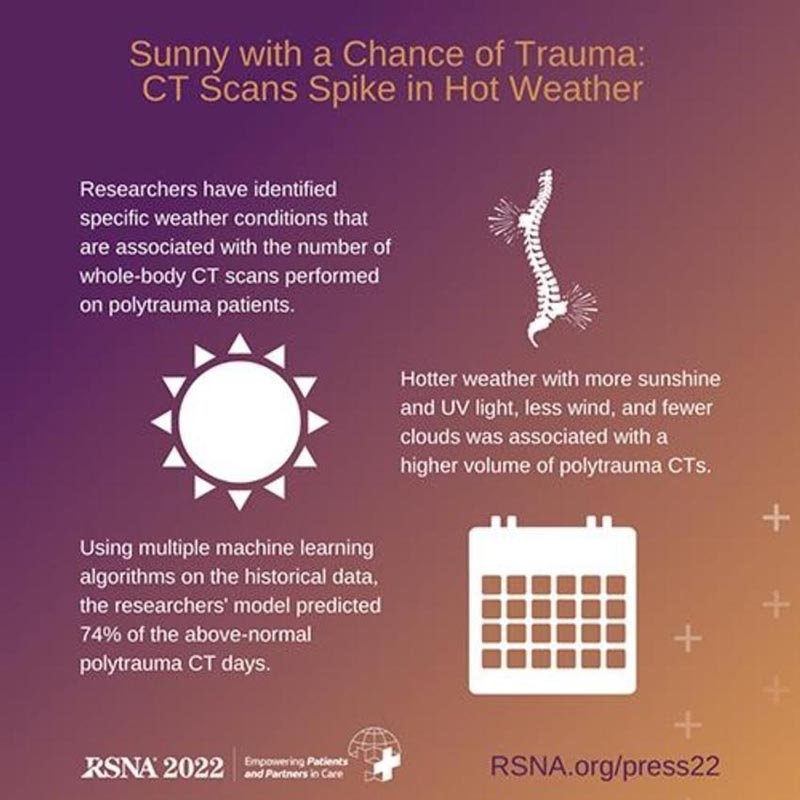Highlights
|

Using a decade of weather and CT imaging data, researchers have identified specific weather conditions that are associated with the number of whole-body CT scans performed in polytrauma patients . The results of the new study were presented at the annual meeting of the Radiological Society of North America (RSNA).
" Trauma accounts for a large portion of hospital admissions, and since polytrauma is time-consuming and unpredictable, we wanted to investigate the association between weather fluctuations and the number of polytrauma CT scans performed at our hospital," said co-author of the study, Martin Segeroth. , MD, radiology resident at the Department of Radiology and Nuclear Medicine at the University of Basel in Switzerland.
Patients with polytrauma suffer multiple traumatic injuries at once and typically require a full-body CT scan that includes at least the chest, abdomen, and pelvis. The exam requires a radiologist to provide an immediate reading and possible follow-up images and interpretation.
The researchers’ data set included 4,613 polytrauma CT scans performed at the Emergency Department of the University of Basel between 2011 and 2020. The median age of the patients was 57 years and 66% were men.
The research team collected daily weather data , including average temperature, total cloud cover, wind speed, sunshine duration, and precipitation.
Statistical analysis of climate and imaging data revealed that a warmer climate with more sunlight and ultraviolet light, less wind, and fewer clouds was associated with greater CT volume in polytraumatized patients. Colder, windier, and cloudier days with less sun and less UV light were correlated with fewer polytrauma CTs. More polytrauma CT scans were performed in the hospital in the summer months (April to September) compared to the winter months (October to March).
“Many hospital admission rates, especially those for respiratory and cardiovascular diseases, are linked to climatic variations,” Segeroth said.
The researchers also set out to forecast the daily occurrence of computerized polytrauma by employing multiple machine learning algorithms on historical data. Their model predicted 73% of days in which polytrauma CT use was above average and 83% of days in which polytrauma use was below average.
“These results imply that our model could predict higher-than-normal demand for polytrauma CT scans on 253 days of a calendar year,” he said. “The amount of cloud cover and temperature were the most important parameters for predicting the daily occurrence of polytraumatized TCs.”
The exact relationship between warmer weather and increased trauma cases remains unclear.
“One speculation is that in the summer, people participate in more outdoor activities, for example, sports, while in the winter people are outdoors less,” Segeroth said. "Although we don’t have an explanation for this, we have observed a strong association." Segeroth said the hospital is considering creating a dashboard on its intranet to alert staff when higher-than-normal volumes of polytrauma CTs are expected.
“Our results demonstrate that it is possible to partially predict normal or above-normal daily amounts of polytraumatized CT volume based on meteorological data,” Segeroth said. “Any approach that helps us be more prepared for polytrauma patients would improve resource planning in the Emergency and Radiology Department.”















